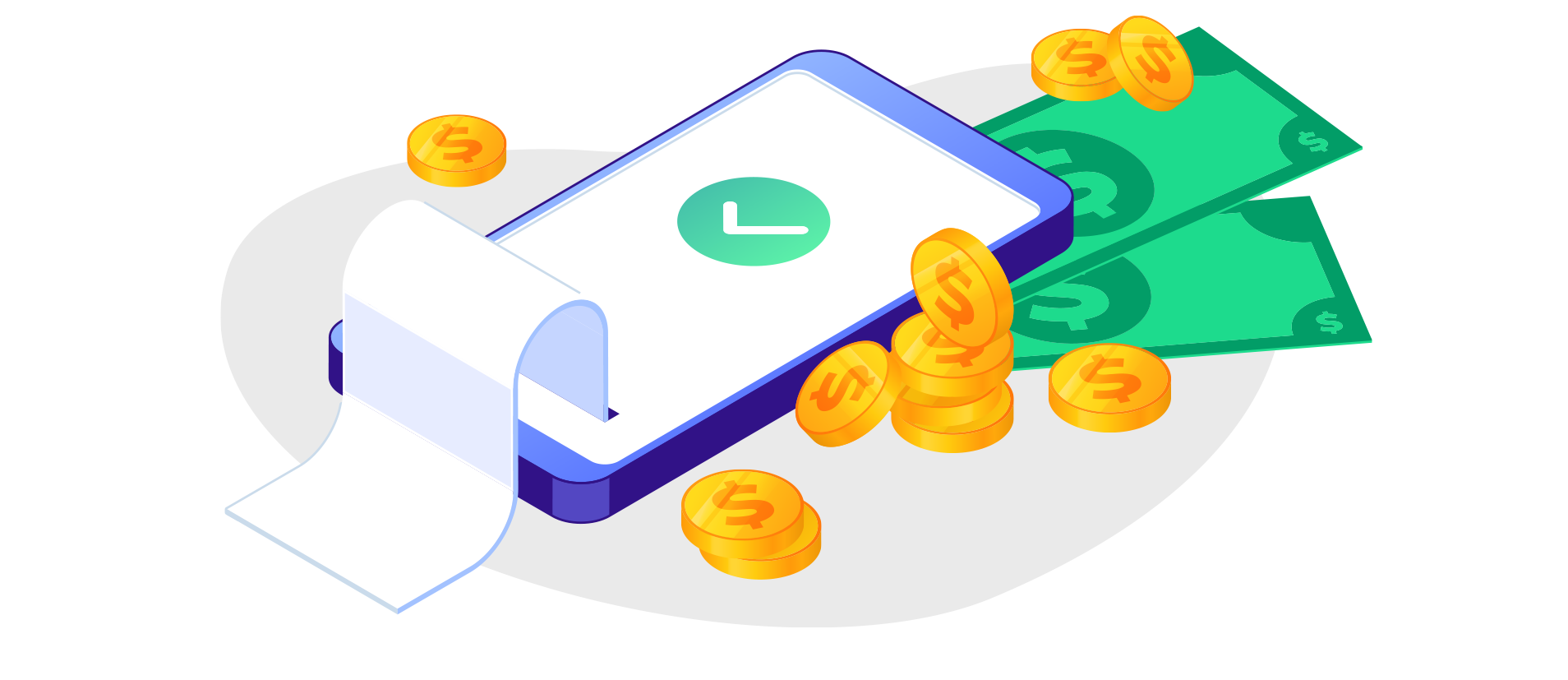Student Loan Repayment Program Consultants
INCOME-DRIVEN REPAYMENT PLANS
FOUR TYPES OF INCOME-DRIVEN REPAYMENT (IDR) PLANS
IDR plans base your monthly payment amount on how much money you make and your family size. The Department of Education offers four IDR plans:

Revised Pay As You Earn (REPAYE) Plan Saving on a Valuable Education (SAVE) Plan
The Saving on a Valuable Education (SAVE) Plan is the newest income-driven repayment (IDR) plan. Like other IDR plans, the SAVE Plan calculates your monthly payment amount based on your income and family size. The SAVE Plan replaced the Revised Pay As You Earn (REPAYE) Plan. Borrowers who were on the REPAYE Plan automatically get the benefits of the SAVE Plan.
Eligible Loan Types: Direct Subsidized and Unsubsidized Loans, Direct PLUS Loans made to students, and Direct Consolidation Loans that do not include PLUS loans (Direct or FFEL) made to parents are eligible for the SAVE Plan.

Pay As You Earn (PAYE) Plan
The Pay As You Earn (PAYE) Plan is a repayment plan with monthly payments that are generally equal to 10% of your discretionary income, divided by 12, but never more than the 10-year Standard Repayment amount. Payments are recalculated each year and are based on your updated income and family size.
Eligible Loan Types: Direct Subsidized and Unsubsidized Loans; Direct PLUS Loans made to students; and Direct Consolidation Loans that do not include PLUS loans (Direct or FFEL) made to parents are eligible for this repayment plan.
You must also be a new borrower to qualify for the PAYE plan. This means that you must have had no outstanding balance on a Direct Loan or FFEL Program loan when you received a Direct Loan or FFEL Program loan on or after Oct. 1, 2007, and you must have received a disbursement of a Direct Loan on or after Oct. 1, 2011.

Income-Based Repayment (IBR) Plan
The Income-Based Repayment (IBR) plan is a repayment plan with monthly payments that are generally equal to 10 percent of your discretionary income if you’re a new borrower on or after July 1, 2014, but never more than the 10-year Standard Repayment Plan amount. If you’re not a new borrower on or after July 1, 2014, payments are generally 15 percent of your discretionary income, but never more than the 10-year Standard Repayment Plan amount.
Eligible Loan Types: Direct Subsidized and Unsubsidized Loans, Subsidized and Unsubsidized Federal Stafford Loans, all PLUS loans made to students, and Consolidation Loans (Direct or FFEL) that do not include PLUS loans (Direct or FFEL) made to parents are eligible for the IBR plan.

Income-Contingent Repayment Plan (ICR Plan)
The Income-Contingent Repayment (ICR) Plan is a repayment plan with monthly payments that are the lesser of (1) what you would pay on a repayment plan with a fixed monthly payment over 12 years, adjusted based on your income or (2) 20% of your discretionary income, divided by 12.
Eligible Loan Types: Any Direct Loan borrower with an eligible loan type may choose this plan. Although parent PLUS loans cannot be repaid under any of the IDR plans (including ICR), parent PLUS borrowers may consolidate their Direct PLUS loans or Federal PLUS loans into a Direct Consolidation loan and then repay the new consolidation loan under the ICR Plan. This is the only available IDR option for parent PLUS borrowers.
Comparing IDR plans at a glance
- Saving on a Valuable Education (SAVE)
- Pay As You Earn (PAYE)
- Income-Based Repayment (IBR)
- Income-Contingent Repayment (ICR)
Payment Terms |
Forgiveness Time |
| Undergraduate loans: 5% of discretionary income Graduate loans: 10% of discretionary income Undergraduate + graduate loans: weighted average of both |
Low-balance borrowers (<$12,000): 10 years Undergraduate loans only: 20 years Graduate loans: 25 years |
Formerly the REPAYE Plan
Payment Terms |
Forgiveness Time |
| 10% of discretionary income, up to the standard 10-year payment amount | 20 years |
Payment Terms |
Forgiveness Time |
| 10% of discretionary income, up to the standard 10-year payment amount. Borrowers before 2014 pay 15% of discretionary income. | 20 years Borrowers before 2014: 25 years |
Payment Terms |
Forgiveness Time |
| The lesser of: 20% of discretionary income and 12- year repayment amount multiplied by an income percentage factor. | 25 years |
No New Enrollments Under PAYE or ICR
As of July 1, 2024, no new enrollments are being accepted for the PAYE or ICR Plans, with two exceptions:
- Borrowers who have already applied for the PAYE or ICR Plan before July 1, 2024, but haven’t had their applications processed yet will still be placed on the plan that they applied for, if approved for that plan.
- Borrowers with a consolidation loan that repaid a parent PLUS loan can continue to enroll in the ICR Plan (but not the PAYE Plan).
Are Your Student Loan Payments Too High?
The advantages of income-driven repayment plans:
![]() Payments based on your income, not on the amount you owe
Payments based on your income, not on the amount you owe
![]() Possibility of $0 monthly payments, depending on your income
Possibility of $0 monthly payments, depending on your income
![]() Chance to have your balance forgiven after twenty or twenty-five years of payments under the plan
Chance to have your balance forgiven after twenty or twenty-five years of payments under the plan
The Down-Side
While there are great advantages to an income-driven repayment plan, there are disadvantages, too:
![]() Because an income-driven plan will extend the life of your loan, you may pay more due to accrued interest.
Because an income-driven plan will extend the life of your loan, you may pay more due to accrued interest.
![]() If a portion of your loan is forgiven after twenty or twenty-five years, the amount that is forgiven could qualify as income, subject to income tax.
If a portion of your loan is forgiven after twenty or twenty-five years, the amount that is forgiven could qualify as income, subject to income tax.
It’s important to carefully consider the pros and cons of an income-driven repayment plan for your specific situation before you make a decision about choosing one of these plans. That is why we’ve compiled this information. If you have questions, just contact us for help.

1. WHO’S ELIGIBLE?
The type of borrower you are plays a role in determining which income-driven repayment plan you are eligible for, as well as your income level.
If you are a Direct Loan borrower, you may be eligible for all four income-driven repayment plans. So, how do you choose? Find out which plan may provide the lowest monthly payment amount. You may contact us if you need help. (Please note: the PAYE plan is only available to new borrowers on or after October 1, 2007, who received a Direct Loan disbursement on or after October 1, 2011.)
If you are an FFEL Loan borrower, you only have one option: the IBR plan. (Please note: if you consolidate your FFEL Loan into a Direct Consolidation Loan, then you will also be eligible for the PAYE, SAVE/REPAYE, and ICR plans. Terms and conditions may vary depending upon when you received your federal student loans.)
2. WHAT TYPES OF
LOANS ARE ELIGIBLE?
PAYE and SAVE/REPAYE plans are available for all direct loans except Parent PLUS loans and consolidation loans that repaid Parent PLUS loans.
The same is true for ICR plans, except that ICR plans may be used to repay consolidation loans made after July 1, 2006 that repaid Parent PLUS Loans.
The IBR plan can be used to repay all Direct Loan and FFEL Program Loans except Parent PLUS Loans and Consolidation Loans that repaid Parent PLUS Loans.



3. DISCRETIONARY INCOME
In all income-driven repayment plans, your monthly payment is calculated on the basis of the money you make, not the money you owe; more specifically, your payment is based on your amount of discretionary income. Discretionary income is the amount of money you have to spend each month after you pay for essentials such as rent, utilities, and groceries.
Rather than try to figure out which expenses are essential and which are not, the federal government has a method of calculating discretionary income: the adjusted gross income (i.e., the income, after all legitimate deductions, on which your federal income tax is calculated, also referred to simply as AGI) minus 150% of the federal poverty line for your family size. The difference between your AGI and 150% of the federal poverty line for your family size is your discretionary income. (For the SAVE plan, that number is 225%.) That number forms the basis for calculating your monthly loan payment.


Repayment Amounts
The government does not expect you to spend all of your discretionary income on student loan payments! Depending upon the income-driven repayment plan you choose, your monthly payment will be ten, fifteen, or twenty percent of your monthly discretionary income.
- For both PAYE and REPAYE/SAVE plans, your monthly loan payment is generally ten percent of your monthly discretionary income. In July 2024, that payment will decrease to five percent for undergraduate SAVE-plan borrowers. Borrowers with both graduate and undergraduate loans will have a weighted average.
- For the IBR plan, your monthly loan payment is generally ten percent of your monthly discretionary income if you are a new borrower on or after July 1, 2014. If you are not a new borrower, the payment will generally be fifteen percent of your monthly discretionary income.
- For the ICR plan, your monthly loan payment is generally either twenty percent of your monthly discretionary income, or whatever you would pay on a repayment plan with a fixed payment over the course of twelve years, whichever is less.
Payment Caps
It is worth knowing that some income-driven repayment plans also have caps on the amount you can be expected to pay, further reducing your burden.
- REPAYE/SAVE and ICR plans have no caps. This means that your monthly payment under these plans could be higher than your monthly payment under a ten-year standard repayment plan, so be sure to calculate your payments carefully so that you get the best option based on your specific circumstances. For help with this, do not hesitate to contact us.
- With PAYE and IBR plans, your monthly payment amount is capped so that your payment is never more than it would have been with a ten-year standard repayment plan, based on the amount you owed at the time you entered the income-driven repayment plan.


Recertifying Your Loan
Once you are enrolled in an income-driven repayment plan and given a monthly payment amount, it is still possible that the amount of your monthly payment may change from time to time. Since your payment amount is dependent upon your income level and the size of your family, changes in either of these factors will result in changes in your monthly payment amount.
Under each plan, you are required to recertify your income and family size information annually, and changes will be calculated into your loan payment amount at that time. If you experience a significant lowering of your income or an increase in your family size, however, you should report that information immediately, since this information will lower your monthly payment amount. You do not have an obligation to report increases in income or decreases in family size except at the time of your annual recertification.
Please note if you are enrolled in a PAYE or IBR plan and your income reaches a level that does not qualify for these plans, you may still remain enrolled in your income-driven repayment plan, but your monthly payment will no longer be calculated on the basis of your income; instead it will be the amount that you would have to pay under the 10-year Standard Repayment Plan.
The advantage of remaining enrolled in your PAYE or IBR plan at this point is that you still qualify for forgiveness of your balance after twenty or twenty-five years (depending upon your plan). If at any time your income level or family size changes again such that you are eligible for an income-driven payment amount, you will be allowed to return to making payments based on your discretionary income. So, once enrolled in one of these plans, it is worth considering remaining enrolled even if your income increases to the point at which an income-driven repayment plan is not necessary.
Married Borrowers
It is also worth noting that if you are married and file a joint tax return, your monthly payment amount under the PAYE, ICR, and IBR income-driven repayment plans will be based on the combined income and loan debt of you and your spouse. Under the SAVE plan, spousal income is excluded. Under the ICR plan, you and your spouse can choose to repay jointly.


4. HOW LONG WILL YOU PAY?
One of the biggest advantages of income-driven repayment plans is the fact that, in all plans, the outstanding balance on your loan will be forgiven after 20 or 25 years of payments, depending upon your plan:
![]() With the PAYE plan, your balance will be forgiven after 20 years of qualifying loan payments.
With the PAYE plan, your balance will be forgiven after 20 years of qualifying loan payments.
![]() With the REPAYE plan, your undergraduate loan balance will be forgiven after 20 years of qualifying loan payments. Loans for graduate or professional study will be forgiven after 25 years of qualifying loan payments.
With the REPAYE plan, your undergraduate loan balance will be forgiven after 20 years of qualifying loan payments. Loans for graduate or professional study will be forgiven after 25 years of qualifying loan payments.
![]() With the IBR plan, your balance will be forgiven after 20 years of qualifying loan payments if you’re a new borrower on or after July 1, 2014. If you are not a new borrower, your balance will be forgiven after 25 years of qualifying loan payments.
With the IBR plan, your balance will be forgiven after 20 years of qualifying loan payments if you’re a new borrower on or after July 1, 2014. If you are not a new borrower, your balance will be forgiven after 25 years of qualifying loan payments.
![]() With the ICR plan, your balance will be forgiven after 25 years of qualifying loan payments.
With the ICR plan, your balance will be forgiven after 25 years of qualifying loan payments.
Note that, in all cases, any amount of your loan that is forgiven may be considered income for the purposes of calculating your income tax obligation.
LEAVING YOUR INCOME-DRIVEN REPAYMENT PLAN
Once you are enrolled in an income-driven repayment plan, you may still opt out of the plan. If you have chosen a PAYE, SAVE, or ICR plan, you can simply choose any other repayment plan for which you are eligible. If you have chosen the IBR plan, however, you will automatically be placed in the Standard Repayment Plan. Only after you have made at least one payment under the Standard Repayment Plan (or under a reduced-payment forbearance, if you are eligible) will you then be allowed to choose another repayment plan. You can avoid having to make a standard payment by requesting a one-month reduced payment while you are being switched to the new IDR plan.
In all cases, you will not be considered eligible for an income-driven repayment plan if you are currently in default on your student loan. If you are in default and wish to be enrolled in an income-driven repayment plan, you must first get out of default status. For information on getting out of default, see our Student Loan Rehabilitation page, or contact us.
GETTING STARTED
Contact us today to get started and enter the land of forgiveness.
There is only one application for all four income-driven repayment plans. When completing this application, it is possible to choose one specific plan, e.g., PAYE, SAVE, IBR, or ICR. Because of the many considerations that go into determining your payment, it is best to consider both your long-term and short-term goals. For some borrowers, a program that provides the lowest payments at the current time but can be reevaluated annually, is the best choice as opposed to choosing the plan for yourself.
As you can see, income-driven repayment plans can seem rather complex! You don’t have to figure all of this out on your own, though. Now that you know that it is possible to have your monthly loan payment calculated on the basis of your income rather than the amount you owe, contact us and let us help you get into an income-driven repayment plan today!

Select Page